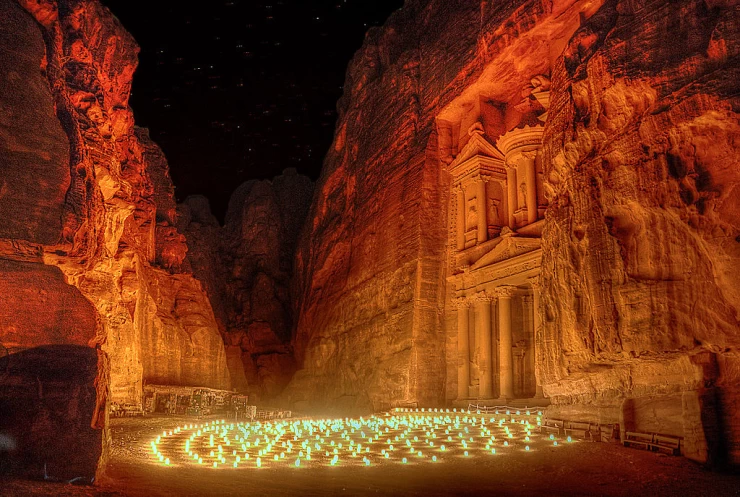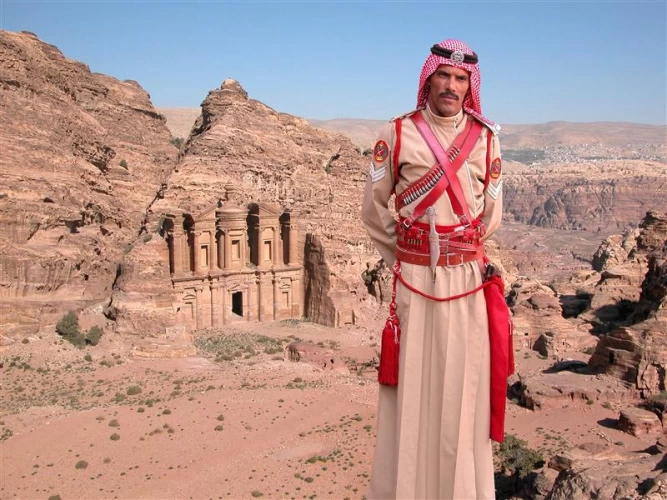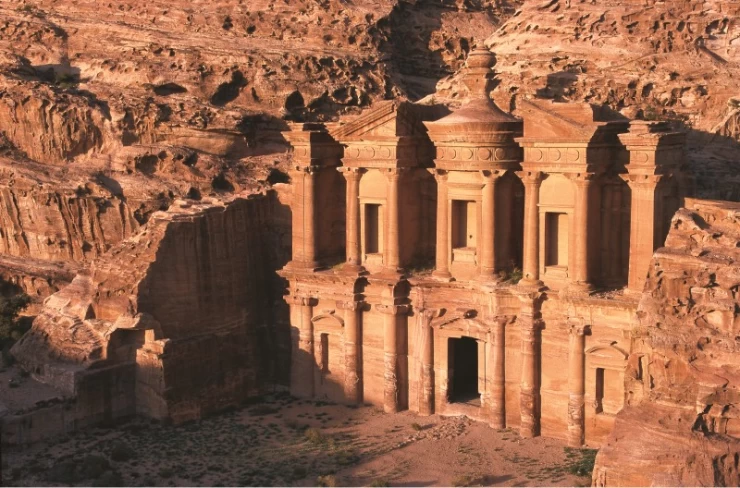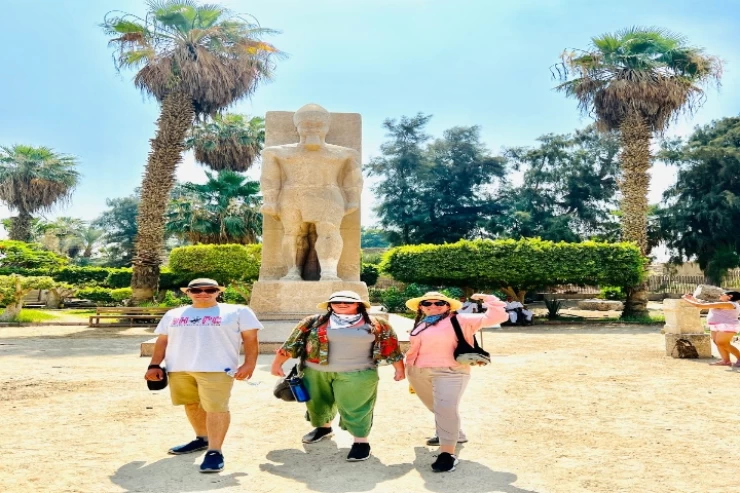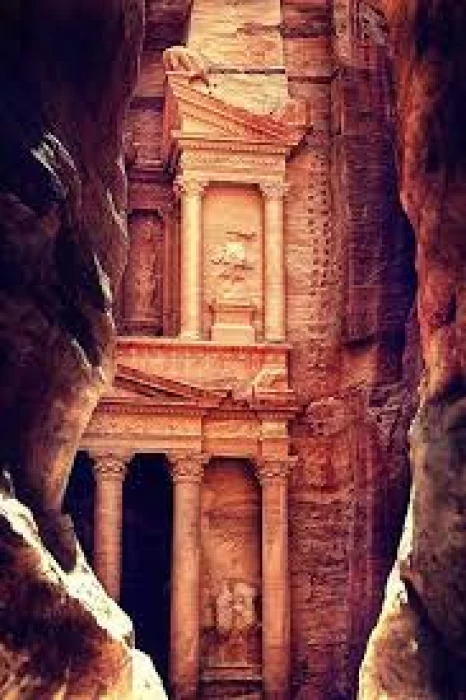
Petra | The Rose Red City
Petra The Rose Red City
Petra is one of the most famous attractions in Jordan. And Petra is located in the southwestern part of the country, it is a Nabatean city that was lost for thousands of years. Only rediscovered in the 19th century, the site is a must-see destination for many travelers. Named one of the New Seven Wonders of the World, hundreds of thousands of people visit Petra every year. Travelers can access Petra from major cities in Jordan
The city of Petra was built by the Nabataean empire in the first century BCE. The Nabateans carved beautiful structures and buildings into pink and red sandstone canyon walls, creating a breathtaking city that was a center for trade for about 500 years.
The city remained hidden and empty for almost two centuries until Swiss explorer John Lewis Burckhardt rediscovered Petra in 1812. The Lost City of Petra was declared a UNESCO World Heritage Site in 1985.
Just getting into the amazing city of Petra is an adventure. After arriving at the front entrance and paying the entrance fee, it is about a 20-minute walk to the most famous structure, the treasury. You will arrive at the treasury by passing through the Siq, a narrow entry point created when the mountain is split in two. Because the ancient city of Petra is so vast, it is important to wear comfortable walking shoes. For an additional fee, visitors also have the option of riding a horse or taking a carriage for part of the way to the treasury.
It was from Petra that the Nabataeans, a community of master builders whose skills included hydraulic engineering, iron production, and copper refining, commanded the trade routes from Damascus to Arabia, profiting by the taxes paid on the caravans that passed through Nabataean territory. An earthquake in AD 555 is the most likely cause of the city's demise, but thankfully many of Petra's most impressive structures remain intact, making it a treasure trove of architectural surprises, hidden along hiking trails of various lengths and difficulties.
The Ancient City is approached through the 1.2km-long, high-walled Siq – a crack in the rock, torn apart by tectonic forces. Just as you start to think there’s no end to the Siq, you catch breathtaking glimpses ahead of the most impressive of Petra’s sights, the Treasury, known locally as Al Khazneh. Carved out of iron-laden sandstone to serve as a tomb, the Treasury gets its name from the misguided local belief that an Egyptian pharaoh hid his treasure in the top urn. The Greek-style pillars, alcoves, and plinths are truly masterpieces of masonry work.
From the Treasury, the way broadens into the Outer Siq, riddled with more than 40 tombs known collectively as the Street of Facades. Just before you reach the weather-worn 7000-seat Theatre, notice a set of steps on the left. These ascend to the High Place of Sacrifice, a hilltop altar, an easy but steep 45-minute climb. Descend to the other side of the mountain via the Garden Tomb, Roman Soldier’s Tomb, and Garden Triclinium, and follow your nose back to the Street of Facades, not far after the Theatre.
Almost opposite the Theatre, you’ll notice another set of steps that lead to a fine set of tomb facades cut into the cliffs above. These belong to the Royal Tombs and are worth a visit not just as they illustrate some of the best carvings in Petra, but also because they give access to another of the city’s mystic high places. To climb to the plateau above the Royal Tombs (one-hour round trip), pass the Urn Tomb, with its arched portico, and look for stairs just after the three-story Palace Tomb. If the tea vendor at the top is available, ask him to show you an aerial view of the Treasury. Return the way you came or search out a set of worn steps leading down a gully to the Urn Tomb.
Returning to the Theatre, the main path turns west along the colonnaded street, which was once lined with shops, passing the rubble of the nymphaeum en route to the elevated Great Temple and the Temple of the Winged Lions on the opposite side of the wadi. At the end of the colonnaded street, on the left, is the imposing Nabataean temple known locally as Qasr Al Bint – one of the few free-standing structures in Petra.
From Qasr Al Bint, the path leads toward two restaurants, on either side of the wadi. The one on the left is the Nabataean Tent Restaurant; the one on the right is the more upmarket Basin Restaurant. Both offer a good range of salads and hot dishes. If these don’t appeal, there are plenty of stalls dotted around the site where you can buy water, herbal tea, and minimal snacks.
Behind the Nabataean, Tent Restaurant is the small hill of Al Habis (the prison). A set of steps winds up to a path that leads anticlockwise around the hill with fine views overlooking fertile Wadi Siyagh. Eventually, you will come to another set of steps to the top of a hill, the site of a ruined Crusader fort, built in the year AD 1116. The views across Petra are spectacular. Allow an hour to circumnavigate the hill and reach the fort.
Beside the Basin, the Restaurant is the opening to Wadi Siyagh and the start of the winding path that climbs to one of Petra’s most beloved monuments, the Monastery. Known locally as El Deir, the Monastery is reached by a rock-cut staircase (a 45-minute walk to the top) and is best seen in the late afternoon when the sun draws out the color of the sandstone. Built as a tomb around 86 BC, with its enormous facade, it was most probably used as a church in Byzantine times. Spare 10 minutes to walk over to the two viewpoints on the nearby cliff tops. From here you can see the magnificent rock formations of Petra, Jebel Haroun, and even Wadi Araba. On the way back down, look out for the Lion Tomb in a gully near the bottom of the path.
Read-up also more ideas of things to do in Cairo, as well as other middle eastern cities, famous archeological sites to explore, and all the adventures you can experience throughout many options of Egypt tours. Check our informative Cairo Travel guide which covers all necessary details and data about the tour to Giza Pyramids, the Coptic Cairo tour, and the Islamic and Coptic Cairo excursions as well as several other Egypt Day Tours and Cairo trips.
A well-traveled bridge between sea and desert, east and west, the Hashemite Kingdom of Jordan is a land of mesmerizing beauty and contrasts, from the Jordan Valley, fertile, and ever-changing, to the remote desert canyons, immense and still. Visitors can explore splendid desert castles, gaze in awe at the haunting wilderness of Wadi Rum, or bathe in the restful waters of the Red Sea.
Visit Jordan and enjoy the best tours in Jordan and Jordan travel packages and tours customized by Cairo Top Tours tour consultants, choose between some of Jordan Holidays with the best Jordan tours itineraries, and discover one of the oldest civilizations in the world.
Also check out our Jordan Excursions and Day tours, Cairo Day Tours, and our Egypt Vacations:
- Egypt Day Tours.
- Travel package in Egypt.
- Cairo day trips.
- 5 Days Cairo and Luxor Vacation.
- Cairo Private tours.
- 6 Days Cairo and Nile Cruise Vacation.
- Egypt Christmas tours.
Without worrying about how to understand the key terms of Egyptian history, we will see an Egyptologist guide, who will answer your expectations.
Latest Articles
Admin
Seabourn Sojourn Cruise Stops in Safaga Port
The Seabourn Sojourn, the flagship vessel of Seabourn Cruise Line's ultra-luxury fleet, was built in 2008 at the T. Mariotti shipyard in Genoa, Italy. Measuring 198 metres, it can accommodate up to 450 guests in its 225 spacious all-suite staterooms.
Admin
Norwegian Sky Cruise Stops in Safaga Port
Norwegian Cruise Line operates a cruise ship called the Norwegian Sky. It was constructed in 1999 and can accommodate 2,004 passengers in addition to 878 crew members. The ship has several dining establishments, lounges and bars, a spa and fitness center, swimming pools, and a number of entertainment areas.
Admin
Explora II Cruise Stops in Safaga Port
Explora II, the second vessel in the Explora Journeys fleet, sets sail in 2024 to redefine luxury cruising. With 461 ocean-front suites, 9 culinary experiences, and 4 pools, this haven of sophistication and sustainability promises an unforgettable "Ocean State of Mind" journey to inspiring destinations.
Admin
Mein Schiff 6 Cruise Stops in Safaga Port
The Mein Schiff 6 is the latest cruise ship in the renowned TUI Cruises fleet, offering passengers a luxurious and sophisticated cruise experience. At 315 metres long, this floating resort features a range of dining options, entertainment, and recreational facilities, including a spa, fitness centre, and sports amenities.
Admin
Mein Schiff 4 Cruise Stops in Safaga Port
When the Mein Schiff 4 cruise ship docks in Safaga, Egypt, passengers are granted access to a realm of ancient wonders. Aboard this state-of-the-art vessel, guests can embark on meticulously curated shore excursions that showcase the region's most iconic landmarks, including the Giza Pyramids, the enigmatic Sphinx, and the remarkable tombs and temples of the Valley of the Kings in Luxor.
Admin
MS Europa Cruise Stops in Safaga Port
The Silver Moon, Silversea's latest flagship, is a luxury cruise ship that offers an exceptional travel experience for Venezuelans exploring Egypt. With a capacity of 596 guests and an impressive 40,700 gross tonnes, the Silver Moon maintains the small-ship intimacy and spacious all-suite accommodations that are the hallmarks of the Silversea brand.






